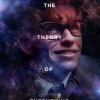c Existing numerical simulations (Freivogel et al., 2006) only model as a discrete random variable without derivation of the inflaton potential.
1.3 Paper Contributions
This paper fills that gap by:
1. Stochastic Formalization of in a Chaotic Inflation + Landscape
Relating the inflaton equation of motion to quantum fluctuations (H/2dH/2p) into the equation Fokker-Planck for the distribution :P(,t)t=[D()P]()P,tP(L,t)=[D(L)P]C(L)P,
where D(L) D(L) is the diffusion coefficient of the inflaton fluctuations, and C(L) C(L) rate of bubble formation.. Deriving anthropic probability Pobs(L) Pobs (L) as:Pobs()e242MPl4/fgal(), Pobs(L)and24p2MPl4/Lfgal(L),
with with(L)fgal(L) is the fraction of bubbles that allow galaxy formation (according to the criteria of Weinberg, 1987).
2. Multiverse Numerical Simulation
Developing algorithms Monte Carlo to map string theory parameters (Qi, Nqi,N) to the distribution : Input: N=100 N=100, qiN(0,1)qiN(0,1), spectrum mass inflaton (m1013 m1013GeV).
Output: Histogram Leff Leff which meets 0<<10121MPl4 0
The simulation results show that 10120. 10120 bubbles have compatible with observations, consistent with anthropic predictions.







